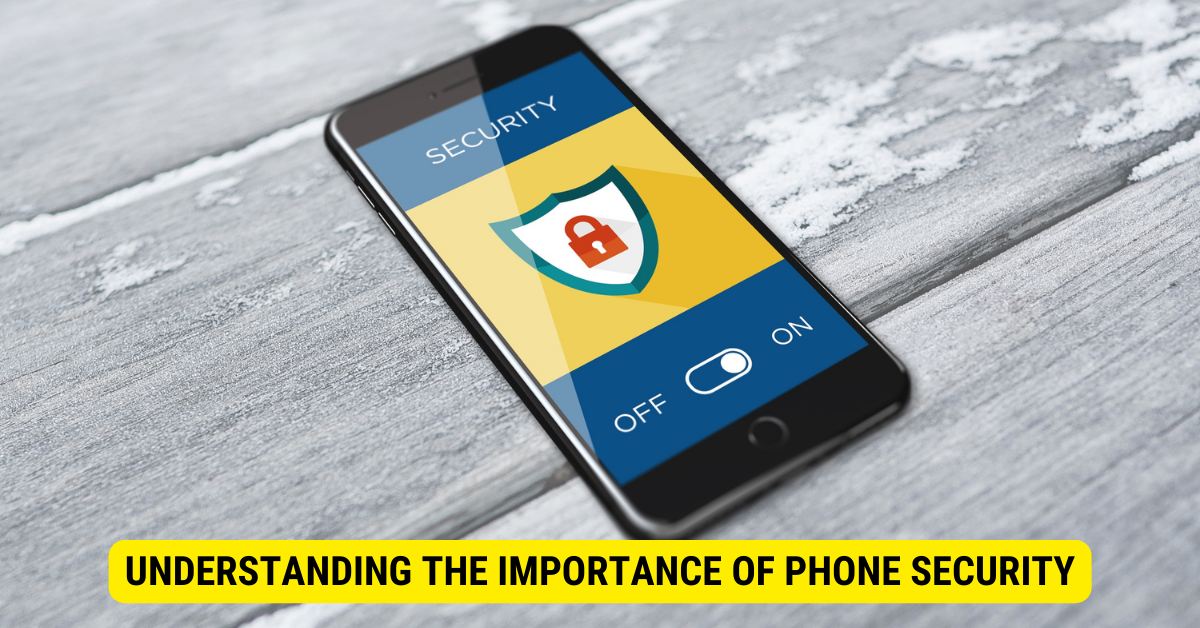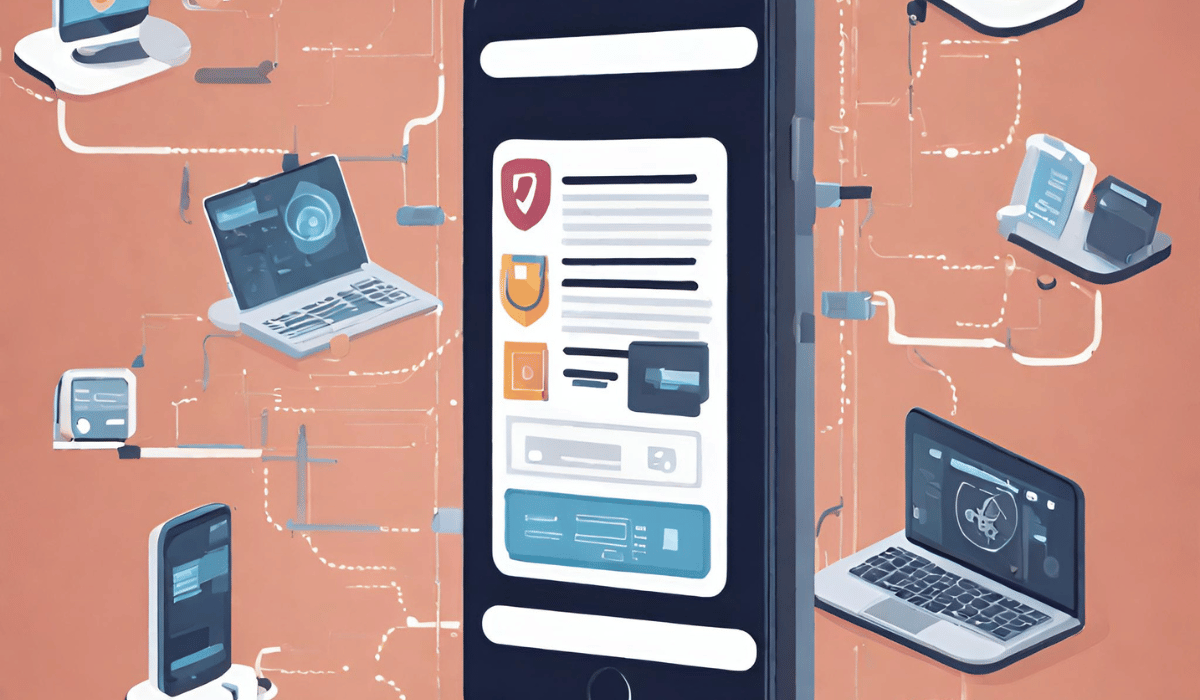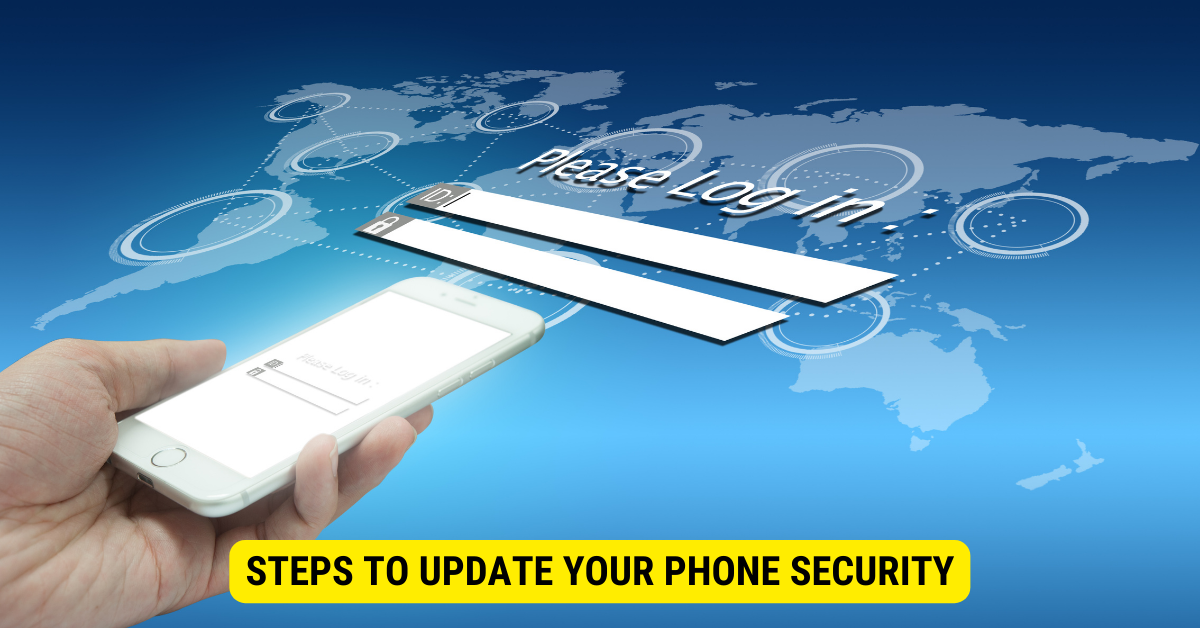Yes, The new phone security update allows users to wipe all content from their phones remotely, ensuring sensitive information does not fall into the wrong hands. This feature permanently erases all data, making it irretrievable.
In the modern era, where our lives are increasingly intertwined with technology, the importance of phone security cannot be overstated. Our smartphones are a treasure trove of personal information, from sensitive financial details to private conversations. Without proper safeguards, this data is vulnerable to hackers, making it crucial to understand the role of phone security and the steps we can take to protect ourselves.
Understanding the Importance of Phone Security

Phone security plays a pivotal role in safeguarding our data. As our phones have become an extension of ourselves, containing a wealth of personal information, such as contacts, messages, and photos, they are a prime target for cybercriminals. Without adequate protection, we expose ourselves to various threats, from identity theft to unauthorized access to our accounts.
In today’s digital age, our phones have become integral to our daily lives. We rely on them for communication, entertainment, banking, and shopping. With so much penetrating information stored on our devices, it is crucial to understand the importance of phone security.
Phone security acts as a shield, protecting our data from falling into the wrong hands. It encompasses various measures like encryption, biometric authentication, and secure operating systems. By implementing these security features, manufacturers ensure that only authorized individuals can access our phones and their information.
Encryption is a fundamental aspect of phone security. It involves encoding our data, making it unreadable to anyone who doesn’t have the decryption key. This ensures that our personal information remains secure even if our phone is lost or stolen.
Biometric authentication, such as fingerprint or facial acknowledgment, adds an extra layer of security. These technologies verify our identity before granting access to our phones, making it incredibly difficult for unauthorized individuals to gain entry.
Secure operating systems, like iOS and Android, are designed to protect our phones from malware and other malicious software. These systems regularly receive updates and security patches to address any potential vulnerabilities.
The Role of Phone Security in Protecting Personal Data
Phone security not only protects our data but also ensures our privacy. With the increasing amount of personal information stored on our phones, including financial details and health records, it is crucial to have robust security measures.
Imagine the consequences if a cybercriminal gains access to her phone. They could steal our identity, access our bank accounts, and even impersonate us online. The impact of such a breach can be devastating, both financially and emotionally.
By prioritizing phone security, we can have peace of mind knowing that our personal information is safe. Without worrying about compromised data, we can confidently use our phones for online transactions, social media, and other activities.
Why Updating Phone Security is Crucial
Enhancing phone security is vital in countering the advanced tactics of cyber attackers. As cyber threats devise innovative ways to penetrate phone defenses, software refreshes come with solutions and remedies to counter these gaps. Neglecting to update our phones exposes us to dangers by offering potential entry points for these attackers. Such weak spots could lead to unauthorized infiltrations, risking our personal information, or even hijacking our devices.
Beyond strengthening security, software updates also boost the phone’s performance and capabilities. They frequently bring in new attributes, upgrade the existing ones, and enhance the system’s smoothness.
Checking for software enhancements and integrating them promptly and proactively is crucial. Device manufacturers and software creators are committed to spotting and rectifying security lapses, ensuring our phones stay fortified.
To summarize, ensuring our phone’s security is paramount in this tech-driven era. It shields our confidential data, maintains our confidentiality, and keeps us apace of digital threats. Recognizing the importance of phone security and diligently updating our devices lets us use our smartphones’ advantages without risking our well-being.
How Does Phone Security Work?

Phone security relies on hardware and software measures that work harmoniously to protect our data. Understanding the basics of phone security is essential for comprehending its intricacies and safeguarding our devices proactively.
The Basics of Phone Security
At its core, phone security starts with secure hardware components. Manufacturers integrate tamper-resistant chips and secure boot processes to prevent unauthorized access when the power of our phones is on. These tamper-resistant chips are designed to resist physical attacks, making it extremely difficult for hackers to extract sensitive information or tamper with the device’s software.
In addition to secure hardware, robust security algorithms and encryption techniques encode our data, making it indecipherable without the proper keys. Encryption is converting data into a form only authorized parties can read. This safeguards that even if someone gains access to our device or intercepts our data during transmission, they won’t understand the encrypted information without the encryption keys.
Moreover, phone security also involves the implementation of secure protocols for communication. These protocols, such as Transport Layer Security (TLS), establish a secure and encrypted communication channel between our devices and the servers we interact with. This prevents eavesdropping and protects sensitive info, such as passwords and credit card details, from being intercepted by malicious actors.
Advanced Phone Security Features
Phone security has evolved beyond the basic measures, offering advanced features to enhance our protection. Biometric authentication, such as fingerprint sensors and facial recognition, adds an extra layer of security by ensuring that only authorized individuals can unlock our devices. These biometric authentication methods use unique physical characteristics to verify our identity, making it extremely difficult for someone to bypass security measures by simply guessing a password or PIN.
Additionally, secure operating systems with built-in security protocols further fortify the defense against potential threats. These operating systems are designed with security in mind, implementing features such as sandboxing, which isolates different apps and restricts their access to sensitive data. This prevents malicious apps from gaining unauthorized access to our personal information or interfering with the normal functioning of our devices.
Consistent software updates are vital for safeguarding phone security. Producers and software teams often roll out updates with security enhancements to tackle potential risks and defend against new challenges. Keeping our devices updated with recent software releases is essential to guarantee optimal security protection.
In conclusion, phone security is a multi-layered approach that combines secure hardware, encryption, secure communication protocols, biometric authentication, and secure operating systems to protect our data and ensure the privacy of our personal information. By understanding the basics of phone security and leveraging advanced features, we can stay one step ahead of potential threats and enjoy a secure mobile experience.
New Update Allows Data Wiping
One of the most significant advancements in phone security is the ability to wipe data remotely. With this new update, users gain the power to erase all content from their phones, mitigating the risk of sensitive info falling into the wrong hands.
The Concept of Data Wiping
Data wiping refers to permanently erasing all data on a device. Unlike a simple deletion, data wiping ensures the information is irretrievable, protecting users’ privacy and preventing potential data misuse.
When it comes to data wiping, it is essential to understand the underlying mechanism that makes it possible. The process involves overwriting the existing data with random characters or patterns, making it nearly impossible to recover any meaningful information. This level of security ensures that even the most sophisticated data recovery techniques cannot retrieve the erased data.
Moreover, data wiping goes beyond just deleting files or formatting a device. It also erases any data traces stored in the device’s memory, such as temporary files, caches, and metadata. By eliminating all remnants of the data, data wiping provides users with a clean slate, ensuring that their personal information remains confidential.
How the New Update Facilitates Data Wiping
Thanks to the latest update, workers can initiate a remote data wipe in case of a lost or stolen phone. By accessing their phone’s security settings through a designated web portal or another trusted device, users can issue a command that erases all data, restoring their peace of mind.
The new update streamlines initiating a remote data wipe, making it more accessible and user-friendly. Users no longer need to rely on complex procedures or third-party applications to safeguard their data. Instead, they can log in to the designated web portal or connect to another trusted device, ensuring their personal information remains secure.
Once the command for data wiping is issued, the update ensures the process is swift and efficient. It prioritizes deleting sensitive information and systematically erases all data, leaving no room for potential breaches. This advanced technology guarantees that users can protect their privacy with ease and confidence.
Furthermore, the new update also offers additional features to enhance the security of the data-wiping process. Users can set up authentication measures, such as two-factor or biometric verification, to ensure that only authorized individuals can initiate a remote data wipe. This added security layer prevents unauthorized access and gives users complete control over their personal information.
In conclusion, the new update that allows data wiping is a significant milestone in phone security. It empowers users to protect their privacy and prevent misuse of their data. With the concept of data wiping explained and the enhanced features of the update detailed, users can confidently utilize this advanced security measure to safeguard their sensitive information.
Steps to Update Your Phone Security

Keeping your phone’s security up to date is essential to take advantage of the latest security enhancements and features. Follow these steps to safeguard your device is fully protected:
Preparing Your Phone for the Update
Before updating your phone’s security, it’s crucial to back up all your important data. This precautionary step ensures no valuable information is lost during the update process. Additionally, ensure your device is connected to a stable internet connection to facilitate downloading and installing the latest security patch.
Detailed Guide to Updating Phone Security
The exact steps to update your phone’s security may differ dependent on your device and operating system. Generally, you can find the update option within your phone’s settings menu. Look for the “Software Update” or “Security Update” section, and follow the prompts to download and install the latest security patch.
The Implications of the New Update
With its data-wiping feature, this new update has advantages and disadvantages for users. Understanding the implications can help us make an informed decision about implementing the update.
Pros and Cons of the Data Wiping Feature
- Pros: The ability to remotely wipe data adds extra security, ensuring our personal information does not fall into the wrong hands. It provides peace of mind in a lost or stolen phone.
- Cons: While data wiping protects personal information, it also means that if you accidentally trigger the command, all data on your device will be permanently erased, including photos, messages, and documents.
How the Update Enhances Overall Phone Security
Beyond the data-wiping feature, the update also includes various other security enhancements. Manufacturers and software developers continually analyze potential vulnerabilities and implement fixes to ensure our devices remain secure. We benefit from these advancements by installing the update, strengthening our overall phone security.
Key Takeaways
- This feature enhances data protection on mobile devices.
- Remote wiping can prevent unauthorized access to sensitive information.
- Regularly updating phone software ensures access to this and other security features.
- Users should familiarize themselves with how to activate this feature.
- It’s crucial to back up important data, as a remote wipe will erase everything.
FAQs
Q: How can I activate the remote wipe feature?
A: Typically, it can be activated in the phone’s security settings or through a dedicated app.
Q: Does every phone support this feature?
A: Not all, but most modern smartphones offer this capability, especially with recent security updates.
Q: Is there any way to recover data after wiping?
A: Once wiped, data cannot be recovered unless it was previously backed up.
Q: Can the phone be used after a remote wipe?
A: Yes, but it will be restored to factory settings.
Q: How quickly will the data be erased once the wipe command is given?
A: It usually happens almost immediately but can depend on the device and its connection.
Conclusion
In conclusion, the new update that allows data wiping significantly enhances phone security. Understanding the importance of phone security, its basics, and the steps to update our devices is key to effectively protecting our personal data. The ability to remotely wipe data adds an extra layer of security and peace of mind while understanding the implications ensures we make informed decisions. By harnessing the power of technology and staying proactive, we can embrace the digital world confidently and securely.
